RENATE BERTLMANN
ALIGHIERO BOETTI
AMANDA BURZIĆ
JULIUS DEUTSCHBAUER
OLGA GEORGIEVA
MATTHIAS HERRMANN
DOROTHY IANNONE
GUDRUN KAMPL
SOLI KIANI
FABRICE LANGLADE
PAUL ALBERT LEITNER
FELIX MALNIG
TONY OURSLER
MARIÁN PALLA
FABIAN ERIK PATZAK
CAROL RAMA
RONG RONG
MICHAELA SPIEGEL
JANA STERBAK
RENATE BERTLMANN
WORKS & VIEWS

Renate Bertlmann, „Zärtlicher Tanz, 1976, Schwarz-Weiss Fotografie Vintage, glänzend 17,7 x 12,8 cm, im Passepartout 35 x 28 cm Rückseite signiert Renate Bertlmann 1976 © Renate Bertlmann / Bildrecht Wien
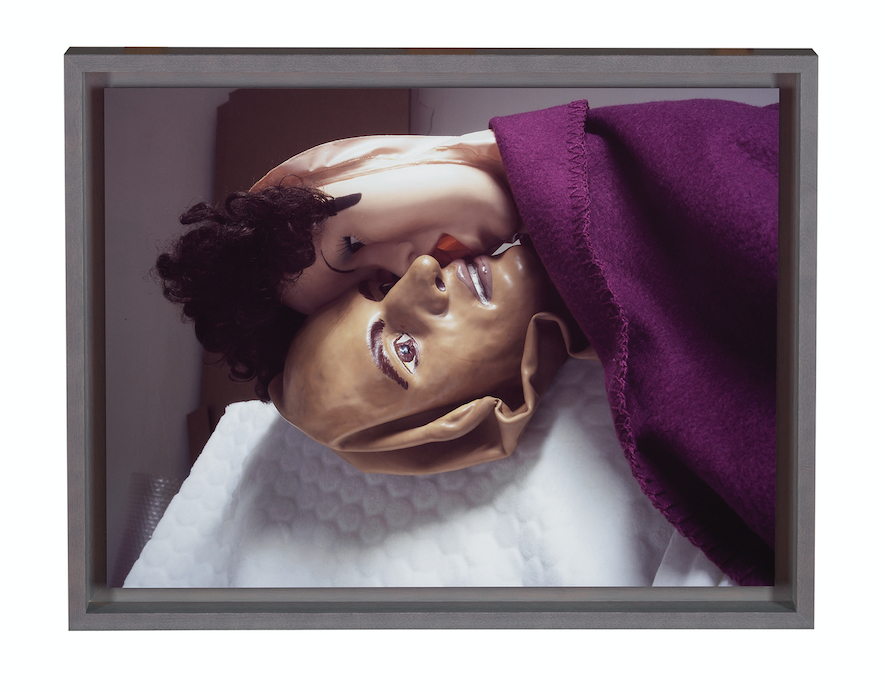
Renate Bertlmann, „Adam and Eva“, 2021, Digital photography, mounted on Dibond, 43 x 55 x 3 cm with frame, Edition 1/3 + 2 AP © Renate Bertlmann / Bildrecht Wien

Renate Bertlmann, „Messerschnullerhände (Ambivalenzen), 1981 Schwarz-Weiss Fotografie Vintage, matt 17,7 x 24 cm, im Passepartout 30 x 40 cm Rückseite signiert Renate Bertlmann 1981 © Renate Bertlmann / Bildrecht Wien
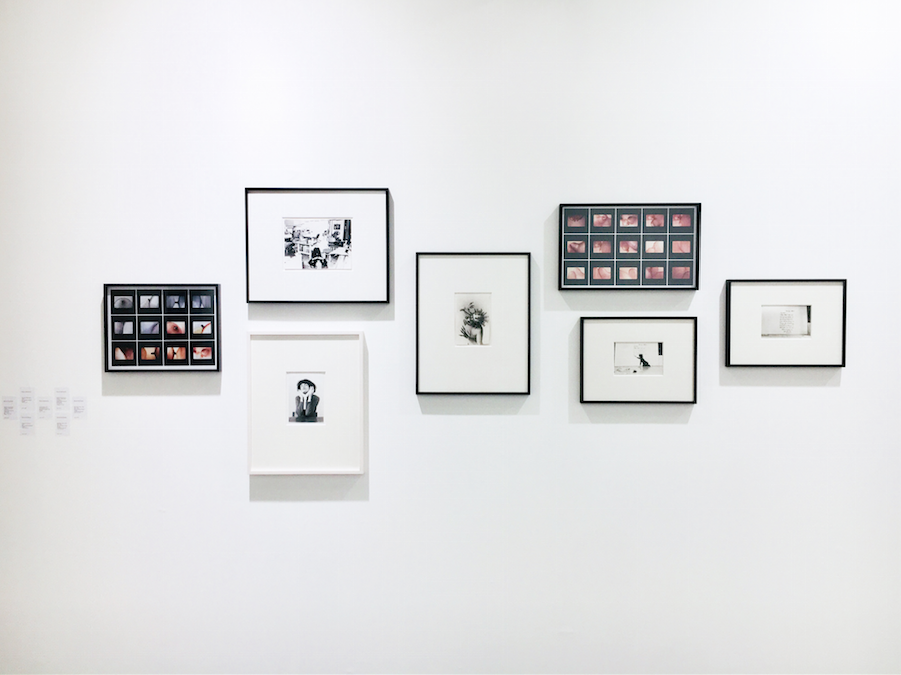
View Renate Bertlmann´s artworks presented @ Curiosa Paris Photo 8-11 Nov 2018, curated by Martha Kirzenbaum, Photo © Carol Tachdjian
rning1.png)
Renate Bertlmann, Mo(u)rning 3, 2011, Digital Print mounted on dibond,
103 x 103 , Edition of 1/3 © Renate Bertlmann / Bildrecht Wien

Renate Bertlmann, Häutungen, 1974, Vintage photograph, 11 x 7 cm, Photo © Renate Bertlmann / Bildrecht
 Renate Bertlmann, „I hate you“, 2020, Digital photography with fans, screen print on glass, framed, 43 x 43 x 6,5 cm © Renate Bertlmann / Bildrecht Wien
Renate Bertlmann, „I hate you“, 2020, Digital photography with fans, screen print on glass, framed, 43 x 43 x 6,5 cm © Renate Bertlmann / Bildrecht Wien

Renate Bertlmann, „Vagina dentata“, 2020, Handschellen, Stahlmesser, bedrucktes Glas (Handschrift Renate Bertlmann, Siebdruck), gerahmt, 78 x 58 x 8 cm © Renate Bertlmann / Bildrecht Wien
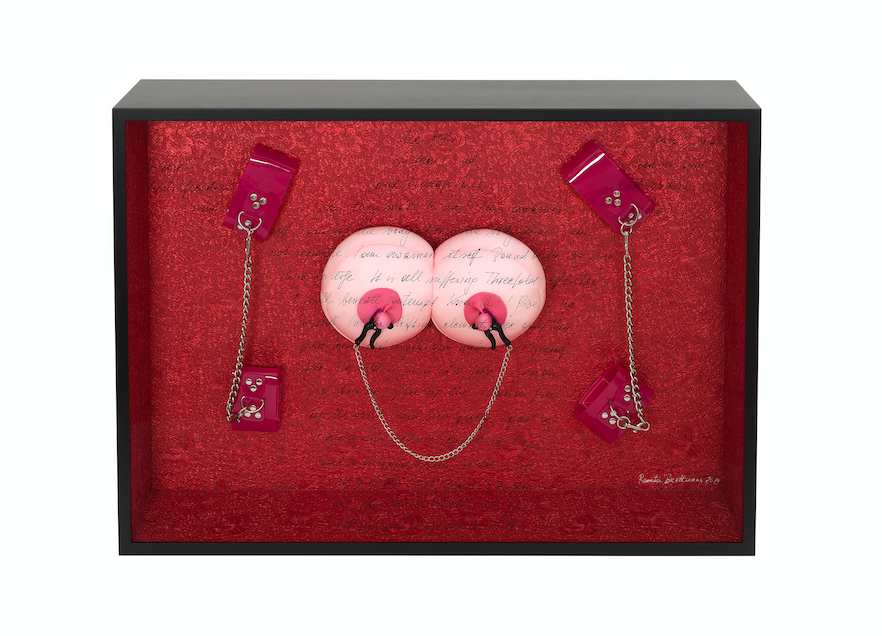 Renate Bertlmann, „Giving Up All Illusions“, 2020, Plastic handcuffs, fabric breasts, printed glass (handwriting by Renate Bertlmann), framed, 58,5 x 82,5 x 15,5 cm © Renate Bertlmann / Bildrecht wien
Renate Bertlmann, „Giving Up All Illusions“, 2020, Plastic handcuffs, fabric breasts, printed glass (handwriting by Renate Bertlmann), framed, 58,5 x 82,5 x 15,5 cm © Renate Bertlmann / Bildrecht wien
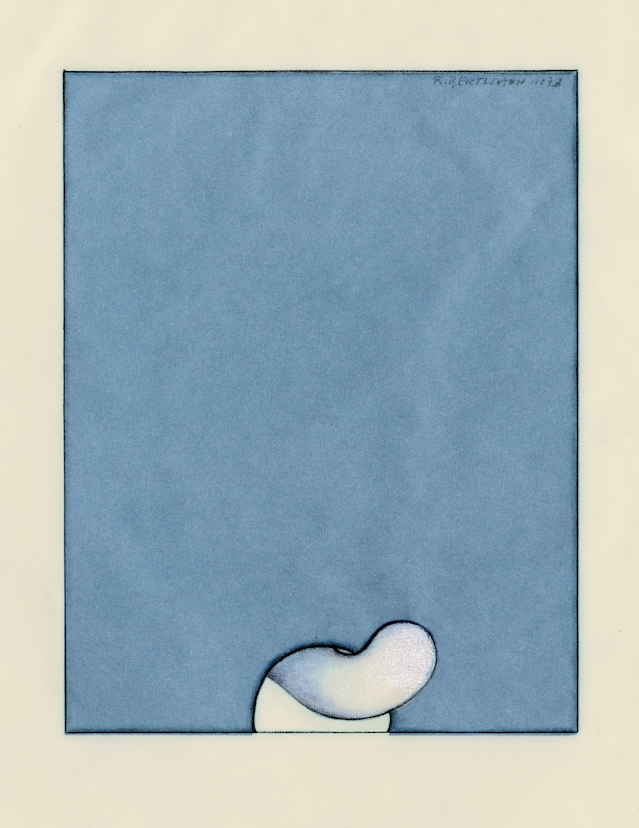
Renate Bertlmann, „Flucht IV, 1974, Collagierte Buntstiftzeichnung auf Transparentpapier 18 x 24 cm, im Passepartout 40 x 50 cm Vorderseite signiert, rechts oben R. Bertlmann 1973 © Renate Bertlmann / Bildrecht wien
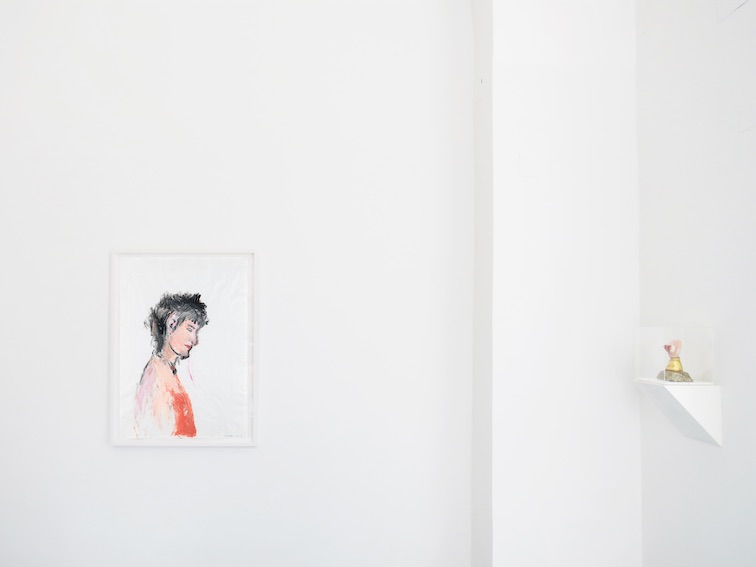
Exhibition view, „Intimacy“ by Renate Bertlmann @ silvia steinek galerie, 2023 | Left : Selbstporträt, 2000, Casein Tempera on paper, 100 x 70 cm | Right : Ex Voto, 1988, unfired clay, painted, gilded, plexiglass box, 14 x 7 x 7 cm / 22 x 22 x 24 cm, Photo © Carol Tachdjian
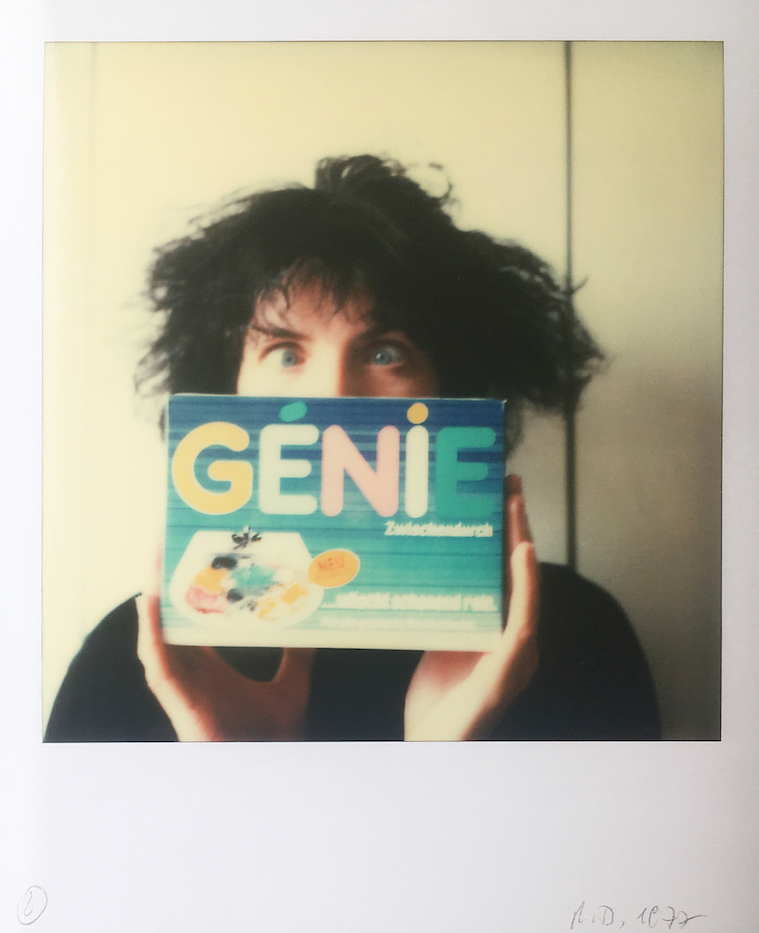
Renate Bertlmann, „Génie“, Polaroid 1977 - Reprint 2019, C-Print auf aluminium kaschiert, 30,5 x 25 cm, Auflage 10 + 2 AP, Photo © Renate Bertlmann / Bildrecht

Renate Bertlmann, Rosemarie, 1983, Buntstift, Lackstift auf Transparentpapier, hinterlegt mit Naturpapier
29 x 41,8 cm, Photo © Renate Bertlmann / Bildrecht

Renate Bertlmann, Zärtlicher Christus (Tender Christ), 2019-2023, Digital print on fine art print paper gl., 55 x 35,73 cm, Auflage 12 + 2 AP. Photo © Renate Bertlmann / Bildrecht

Renate Bertlmann, "Vagina dentata" & "Vagina tenera", 2022, C-Print on fabrics, each 102 x 65 x 5,5 cm each, part of the solo exhibition „Intimacy“ @ silvia steinek galerie, 2023, Photo © Renate Bertlmann / Bildrecht
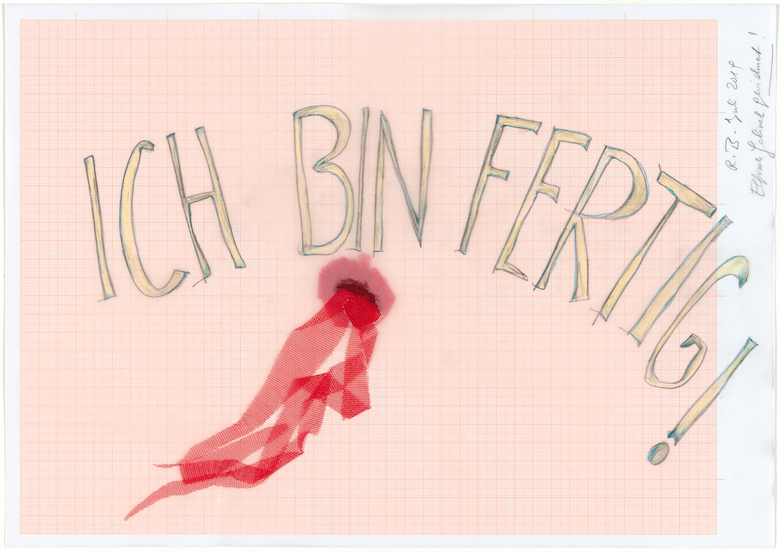
Renate Bertlmann, ICH BIN FERTIG (I´M DONE), 2019, pencil, oil pastel, mixed media on graph paper, 29,6 x 42 cm, im passe-partout 50 x 70 cm, Photo © Renate Bertlmann / Bildrecht
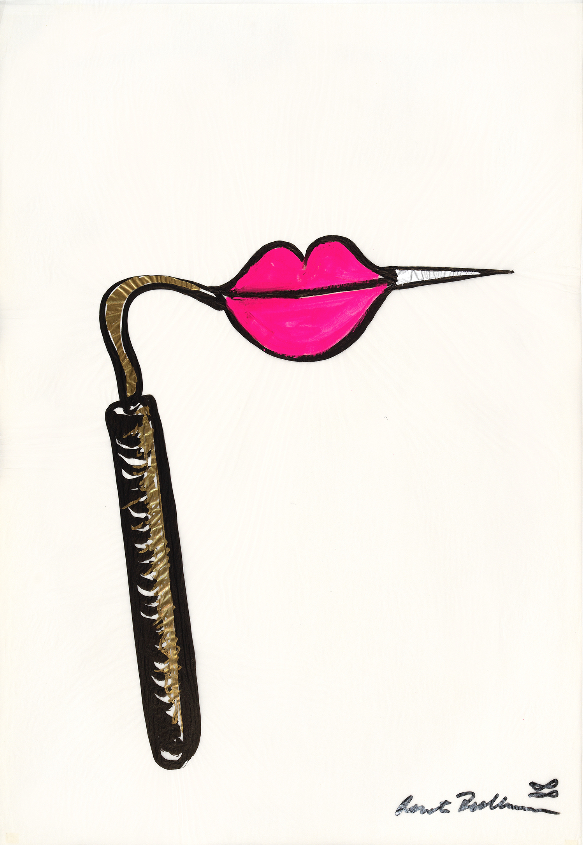
Renate Bertlmann, Rosemaries Baby V, 1988, Ink, acrylic on aquafix, 87 x 60 cm, passe-partout 100 x 70 cm, Photo © Renate Bertlmann / Bildrecht

Renate Bertlmann, Eva III, 2020, Bleistift, Ölkreide auf Papier, 50 x 70 cm / 60 x 80 cm, Photo © Renate Bertlmann / Bildrecht

Renate Bertlmann, Journey, 2023, Streicheleinheiten (Caresses units), 1976-2023, latex, vintage hat suitcase, highchair, vintage toiletry flasks, condoms, installation in Situ 116 x 50 x 50 cm, part of the solo exhibition "Intimacy" @ silvia steinek galerie, 2023, Photo © Carol Tachdjian
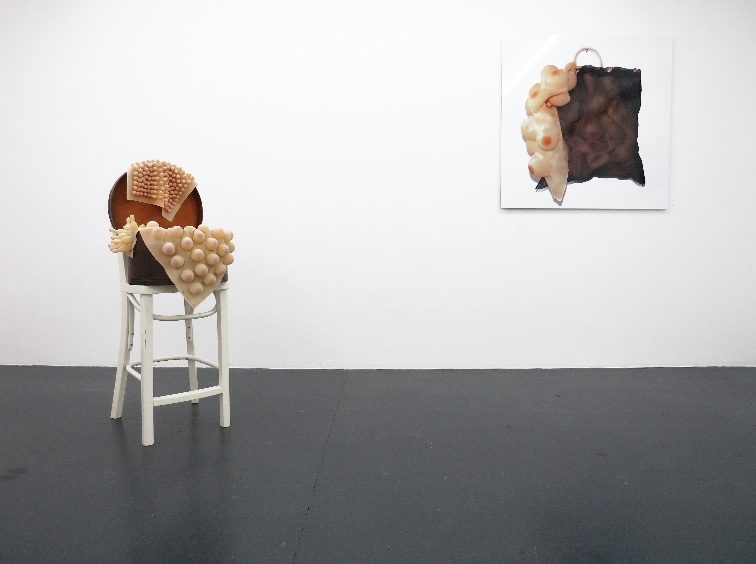
Exhibition view, „Intimacy“ by Renate Bertlmann @ silvia steinek galerie, 2023 | Left : Renate Bertlmann, Journey, 2023, Streicheleinheiten, Vintage suitcase, chair, Installation in Situ | Right : Renate Bertlmann, Mo(u)rning 5, 2011, Digital photograph mounted on dibond, 103 x 103 cm, edition 1/3, Photo © Carol Tachdjian

View Renate Bertlmann´s artworks presented @ Curiosa Paris Photo 8-11 Nov 2018, curated by Martha Kirzenbaum, Photo © Carol Tachdjian
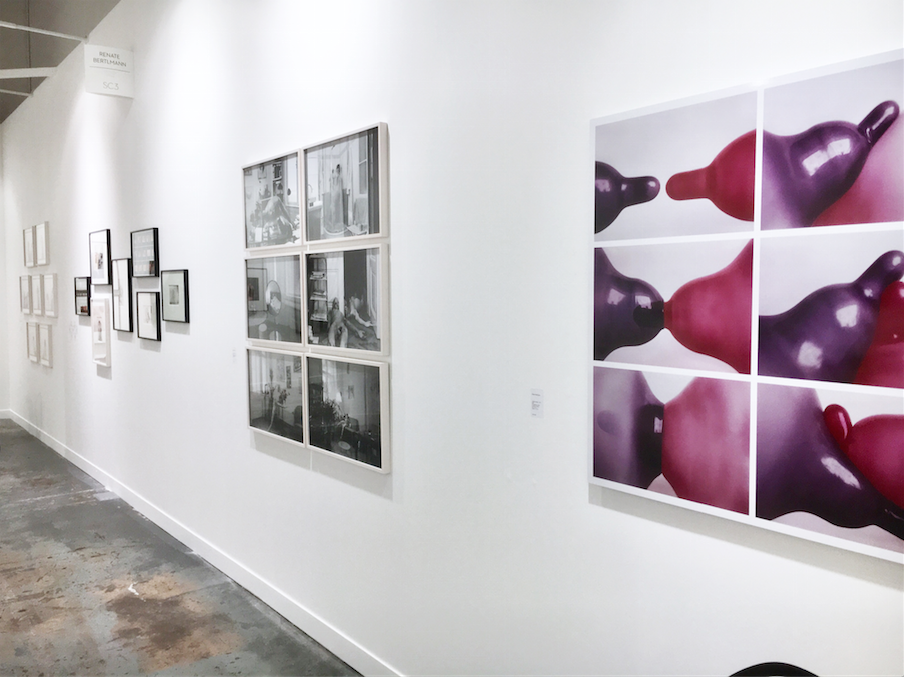
View Renate Bertlmann´s artworks presented @ Curiosa Paris Photo 8-11 Nov 2018, curated by Martha Kirzenbaum, Photo © Carol Tachdjian
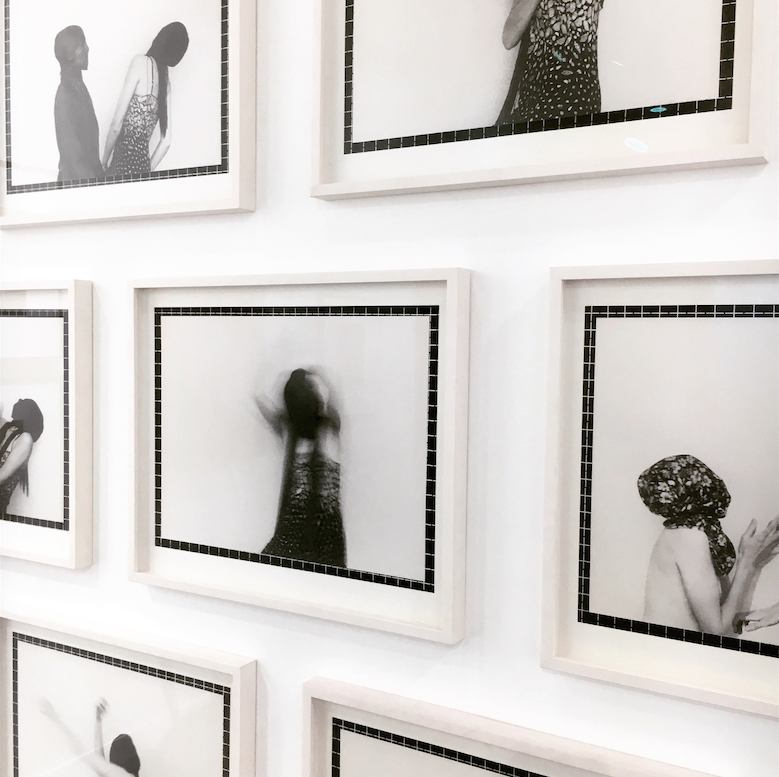
View Renate Bertlmann, Les Amants, 1979, Vintage photograph, 7 parts artwork, each 39,5 x 47,5 cm, presented @ Curiosa Paris Photo 8-11 Nov 2018, curated by Martha Kirzenbaum, Photo © Carol Tachdjian
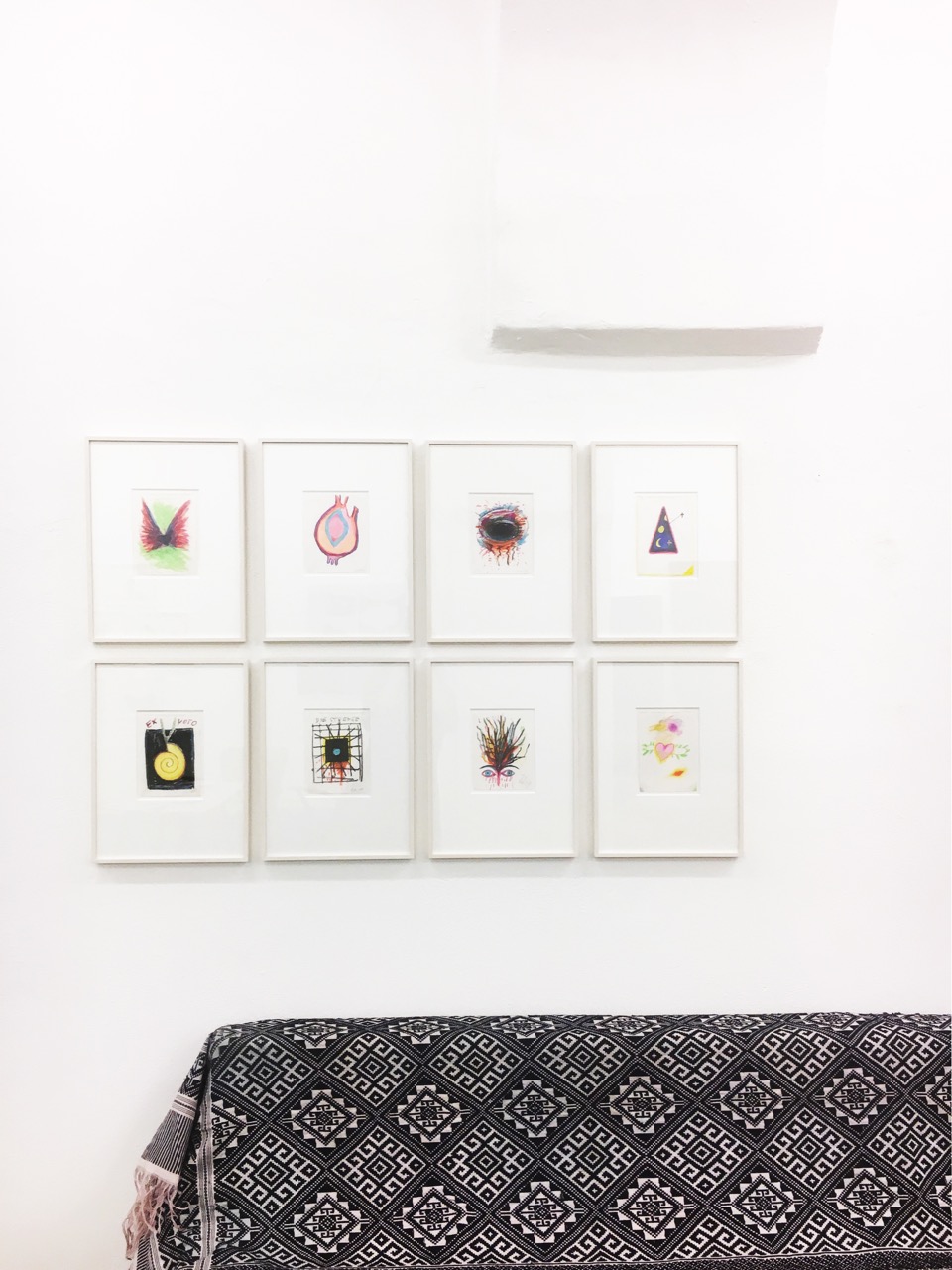
View Private show, Halle Steinek, November 2018, drawings by Renate Bertlmann

View of our presentation "VIVACE" on Artissima 2017, featuring artwortks by Renate Bertlmann, Natalia LL and Jana Sterbak, Photo © Carol Tachdjian

View of our presentation "VIVACE" on Artissima 2017, featuring artwortks by Renate Bertlmann, Natalia LL and Jana Sterbak, Photo © Carol Tachdjian

Renate Bertlmann, Serie "Top U29 I - VI", 2005 © Carol Tachdjian

Renate Bertlmann, Aus der Serie Top U29, #1, 2005, Digitalprint kaschiert auf Kapa, gerahmt, 40, x 60 cm, Auflage 1/3 + 2 AP © Renate Bertlmann
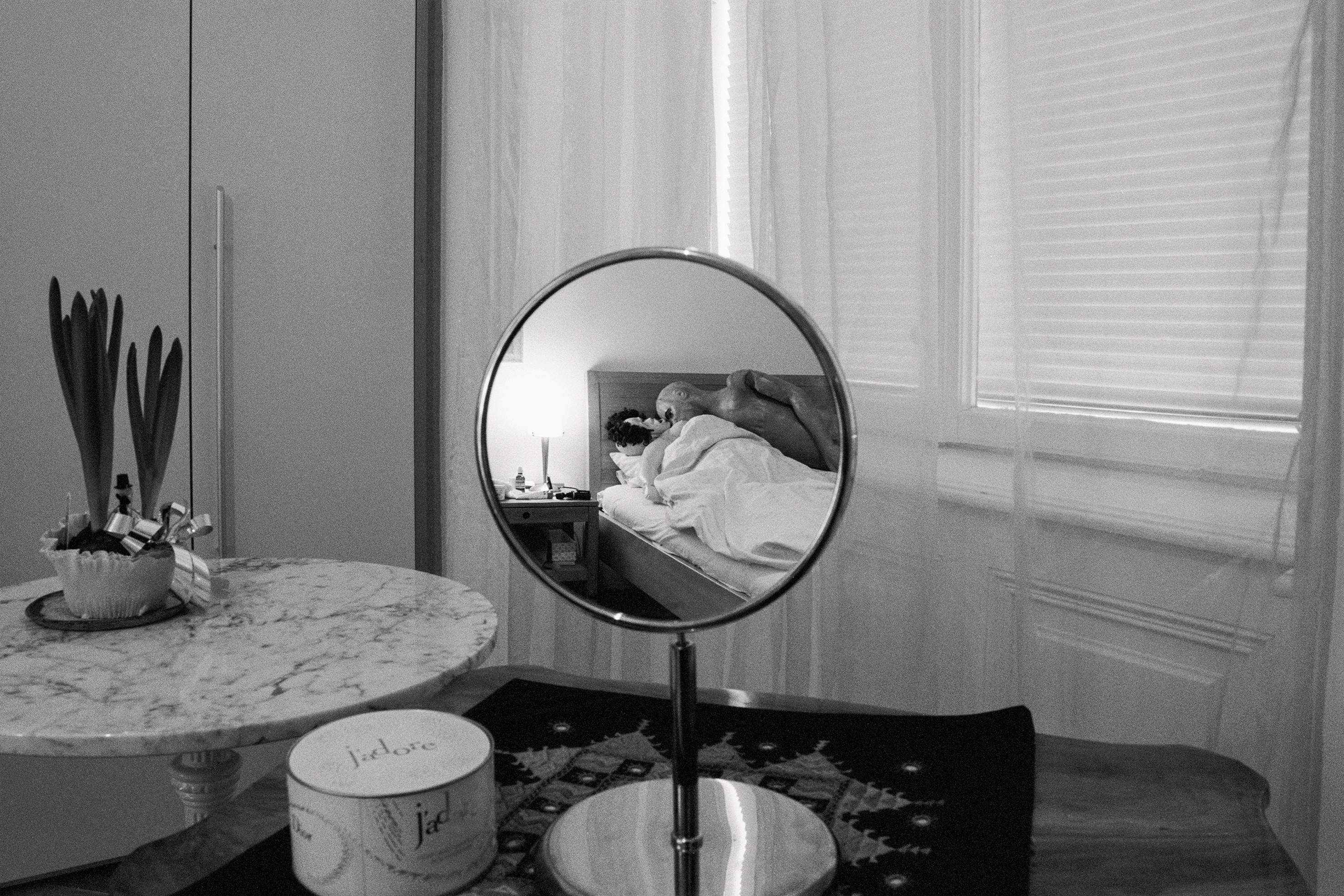
Renate Bertlmann, Aus der Serie Top U29, #2, 2005, Digitalprint kaschiert auf Kapa, gerahmt, 40, x 60 cm, Auflage 1/3 + 2 AP © Renate Bertlmann

Renate Bertlmann, "Zärtliche Berührungen", 1976, Schwarz-Weiss Fotografie Vintage
24 x 30,4 cm, im Passepartout 40 x 50 cm Rückseite signiert © Renate Bertlmann / Bildrecht Wien

View Renate Bertlmann, solo presentation on Artbrussels @ Galerie Steinek, 2016, Photo © Carol Tachdjian

Renate Bertlmann, aus der Serie „Zärtliche Pantomime 1 bis 4“, 1976-2012, Vintage or digital print, 27 x 25 cm, Edition of 20 + 2 AP, Poto © Renate Bertlmann / Bildrecht Wien 2023

View Renate Bertlmann, solo presentation on Artbrussels @ Galerie Steinek, 2016, Photo © Carol Tachdjian
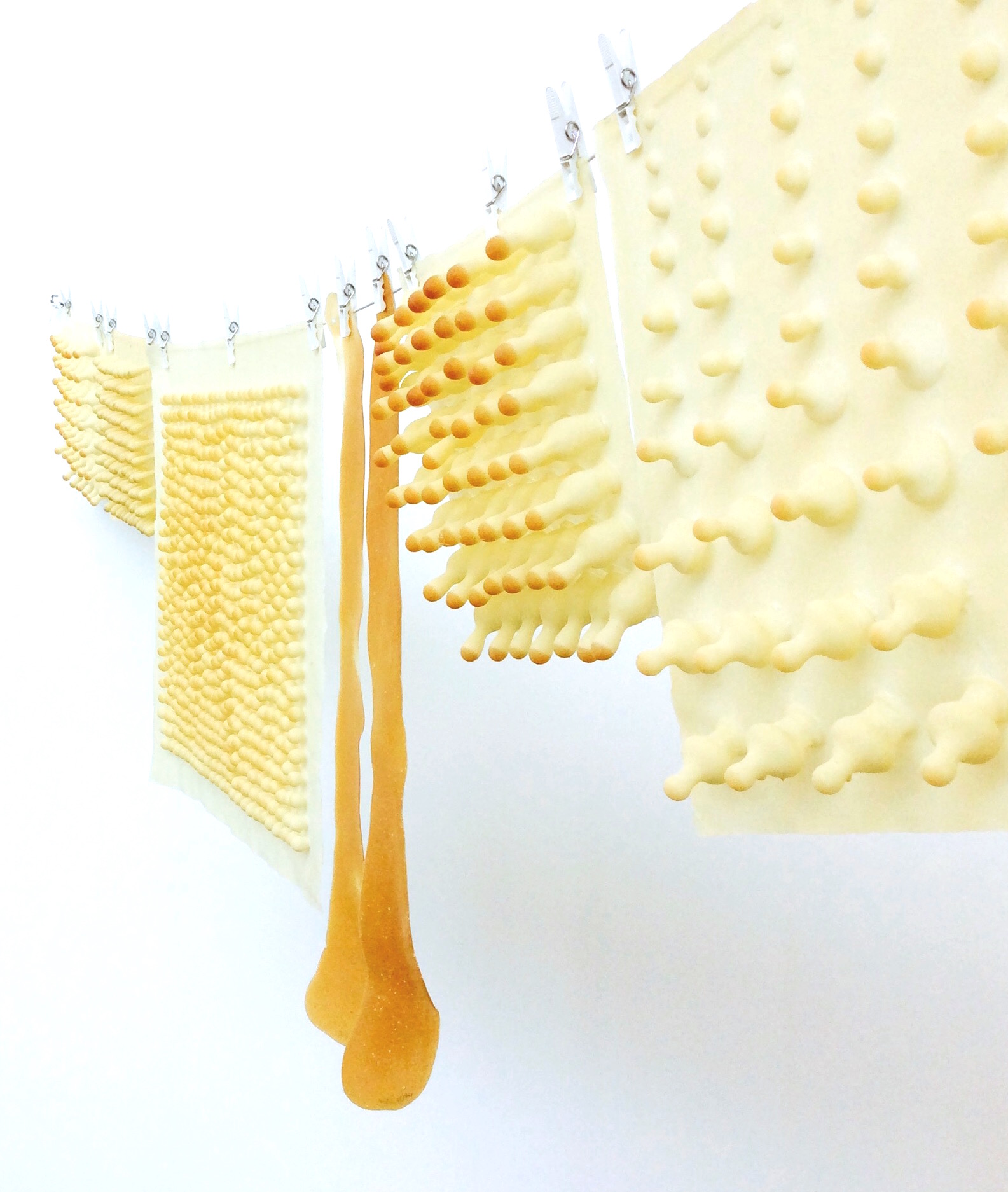
View Renate Bertlmann, solo presentation on Artbrussels @ Galerie Steinek, 2016, Photo © Carol Tachdjian
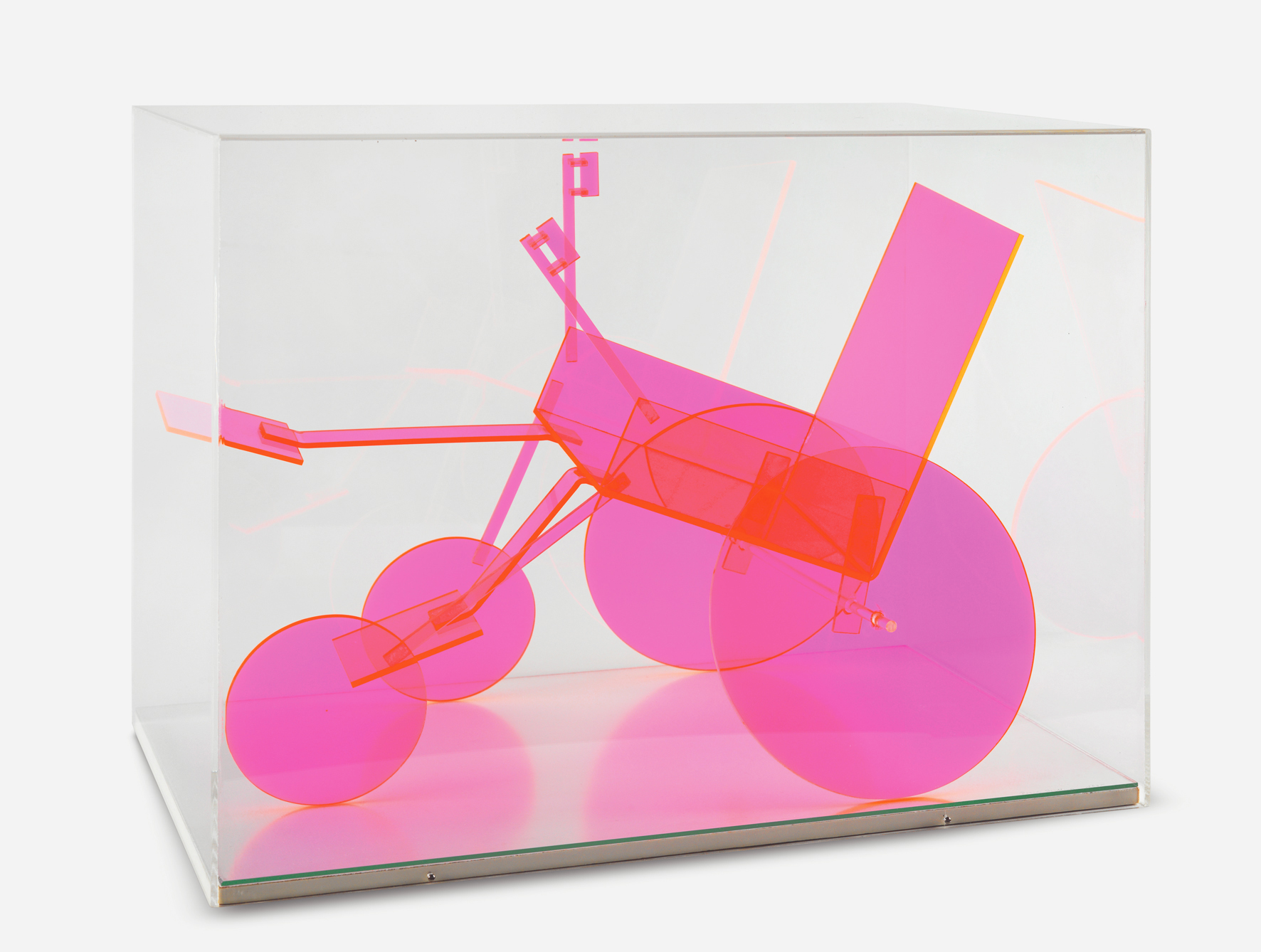
Renate Bertlmann, Rollstuhl (rot-klein), 1975, Plexiglas, 47 x 30 x 35 cm, part of solo presentation Viennacontemporary 2016, Photo © Renate Bertlmann / Bildrecht Wien 2023
__1975_29x54,5x4cm1.png)
Renate Bertlmann, Baukasten Rollstuhlbaukasten (rot), 1975, Plexiglas, Holz, 29 x 54,5 x 4 cm, part of solo presentation Viennacontemporary 2016, Photo © Renate Bertlmann / Bildrecht Wien 2023
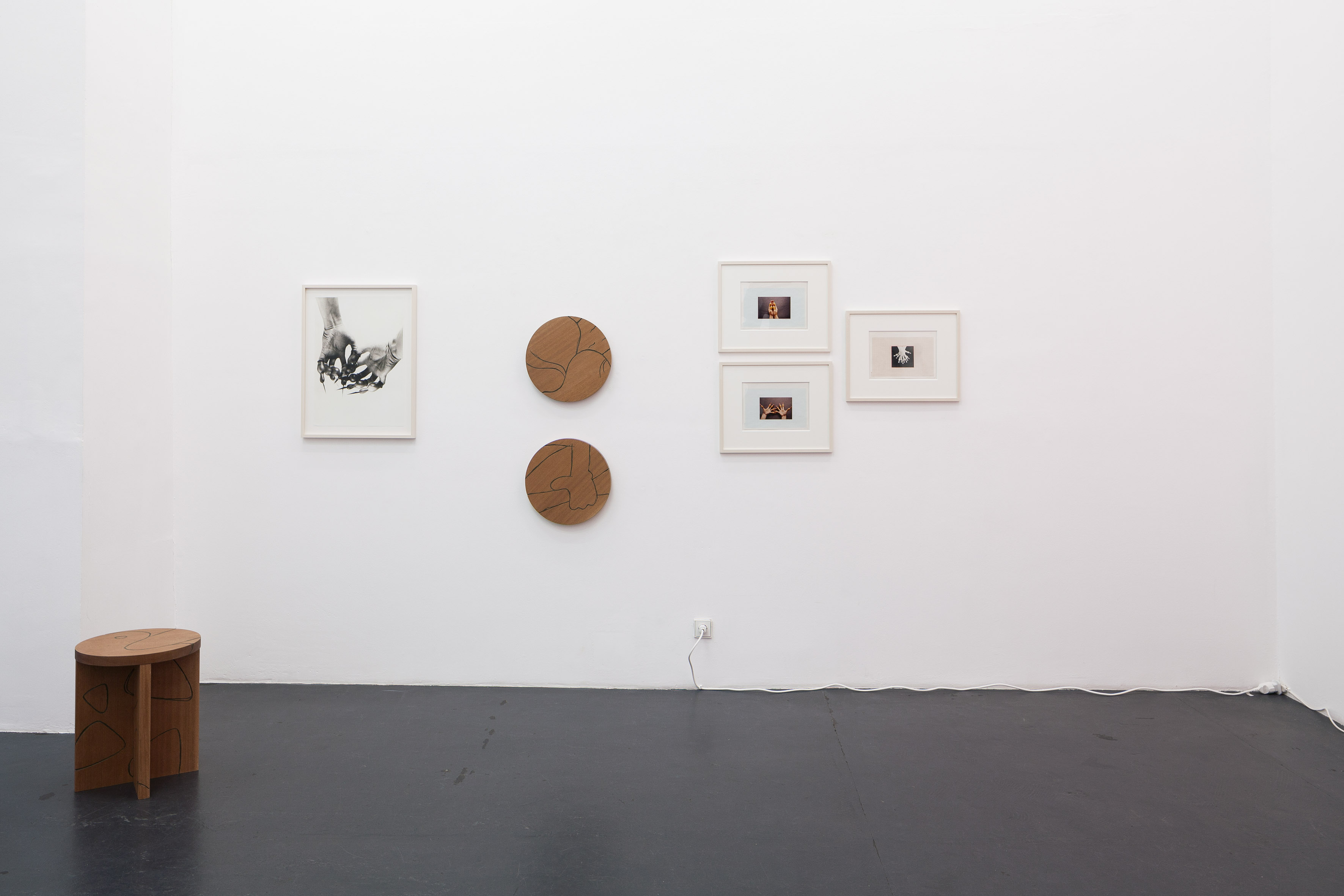
Exhibition view „Live End Dream No“ curated by Eva Fabbris @ Galerie Steinek, Wien 2017 / left to right "Sugar, Coffee, Lemonade, Tea, Rum, Boom! (I)“, 2012 – 2017 by Andrea Romano and Annatina Caprez, Courtesy artist & Vistamare, Pescara / „Messerschnullerhände", 1981-2015 by Renate Bertlmann Courtesy artist & Galerie Steinek, Vienna / "Sugar, Coffee, Lemonade, Tea, Rum, Boom! (II)", 2012 by Andrea Romano and Annatina Caprez, Courtesy artist & Vistamare, Pescara / Zärtliche Hände I, II, III, 1977 by Renate Bertlmann, Courtesy artist & Galerie Steinek, Vienna and Detail "Sugar, Coffee, Lemonade, Tea, Rum, Boom! (II)", 2012 by Andrea Romano and Annatina Caprez, Courtesy artist & Vistamare, Pescara /© Rudolf Strobl
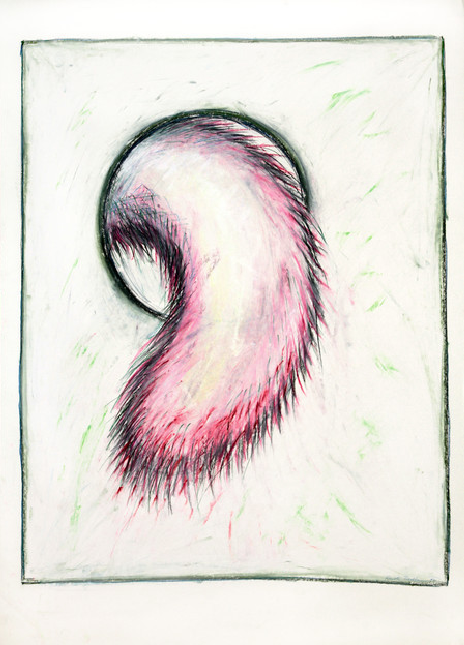
Renate Bertlmann, Flucht (Escape) VIII, 1987, Buntstift, Ölkreide auf Papier, 88 x 62,5 cm, part of the group exhibition "VIVACE" featuring artworks by Renate Bertlmann, Gloria Friedmann, Natalia LL, Jana Sterbak @ silvia steinek galerie, 2015 Photo © Renate Bertlmann / Bildrecht 2023
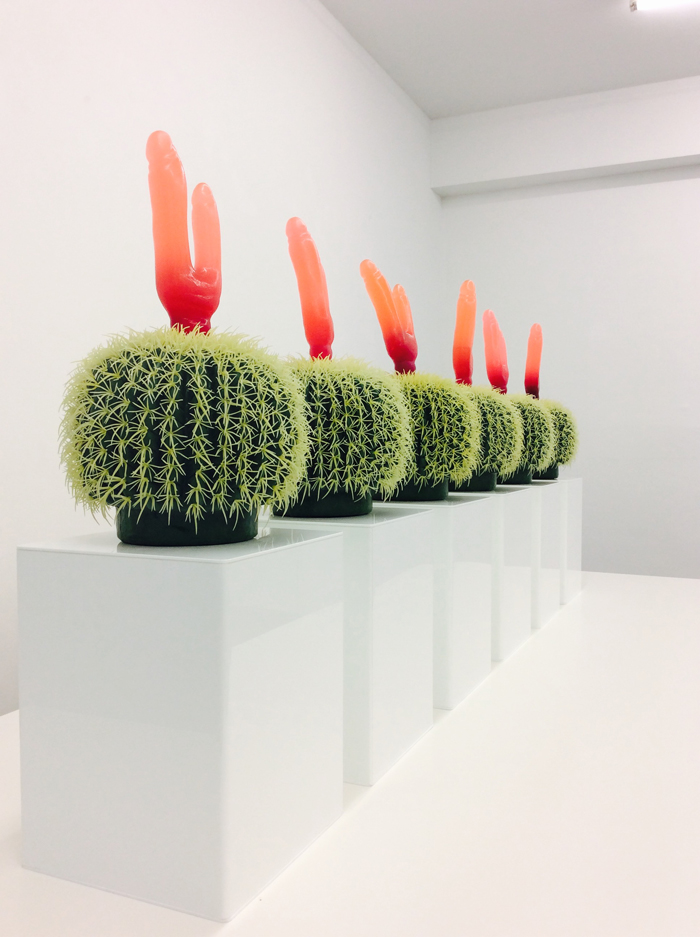
Renate Bertlmann, "Desert", Installation with 6 cactuses, 1999, Mixed Media, each 25 x 25 x 80 cm, in Situ 120 x 270 x 160 cm, part of the group exhibition "VIVACE" featuring artworks by Renate Bertlmann, Gloria Friedmann, Natalia LL, Jana Sterbak @ silvia steinek galerie, 2015 © Carol Tachdjian
RENATE BERTLMANN
* 1943 in Vienna, Austria; she lives and works in Vienna
Solo exhibitions (Selection)
2023 Fragile Obsessions, Belvedere 21, Vienna
2023 Intimacy, Renate Bertlmann, silvia steinek galerie, Vienna
2020 Renate Bertlmann, Carlone Contemporary, Oberes Belvedere, Wien
2019 Discordo Ergo Sum. Österreich Pavillon, Biennale Arte, Venedig
2019 Hier ruht meine Zärtlichkeit, Landesgalerie Niederösterreich, Krems
2018 #It’s You Too, Galerie Steinek, Wien
2017 Angst, Fotohof, Salzburg
2017 Sex Work: Feminist Art & Radical Politics, Richard Saltoun Gallery, Frieze, London
2017 RENATE BERTLMANN, Sotheby’s - SI2 London, London
2016 Renate Bertlmann. Amo Ergo Sum, Vertikale Galerie der SAMMLUNG VERBUND, Wien
2016 Renate Bertlmann. Two Climaxes, Richard Saltoun Gallery, London
2006 Top U29, Studio Tommaseo, Triest
2002 Werkschau VII. Renate Bertlmann. Arbeiten 1976–2002, Fotogalerie Wien
1993 SCHNEEGESTÖBER-FLITTER(S)TÜRME, Kunsthalle Exnergasse, Wien
1984 Dem Himmel nahe, Galerie Apropos, Luzern
1982 Stimmen der Sehnsucht, Galerie Apropos, Luzern
1982 Renate Bertlmann. Streicheleinheiten, Frauenmuseum, Bonn
1978 Bertlmann. Urvagina, Tommaseo Galleria d’ Arte, Triest
1977 Renate Bertlmann, Galerie Modern Art, Wien
1976 Renate Bertlmann, Tommaseo Galleria d’Arte, Triest
1973 Renate Bertlmann. Mischtechniken, Künstlerhaus, Wien
Group exhibitions (Selection)
2022 FLOWERS! - Flowers in the art of the 20th and 21st century, Museum Ostwall, Dortmund
2022 FEMINIST AVANT-GARDE, Museum of Contemporary Art Vojvodina, Novi Sad, Serbia
2022 Rendezvous mit der Sammlung. Kunst von 1960 bis heute, Landesgalerie Niederösterreich, Krems
2022 that other world, the world of the teapot. tenderness, a model, Kestner Gesellschaft, Hannover
2022 FEMINIST AVANT-GARDE, Les Rencontres de la Photographie d’Arles Photographic Festival, Arles
2021 GLASSTRESS BOCA RATON 2021, Boca Raton Museum of Art, Boca Raton, FL
2021 WHEN GESTURE BECOMES EVENT, Muzej in galerije mesta Ljubljane, Ljubliana
2021 Herz aller liebst, Volkskunde Museum, Monatsschlössl Hellbrunn, Salzburg
2021 Glasstress. Window to the Future, State Hermitage Museum, St. Petersburg
2021 Avantgarde und Gegenwart, Die Sammlung Belvedere, Belvedere 21, Wien
2021 On Hannah Arendt: The Crisis in Culture, Richard Saltoun Gallery, London
2021 Female Sensibility. Feministische Avantgarde aus der Sammlung Verbund, Lentos Museum, Linz
2020 THE FEMINIST AVANTGARDE OF THE 1970s - Works from the SAMMLUNG VERBUND Collection, Vienna, ICP - International Center of Photography, New York
2020 BODILY OBJECTS, Arusha Gallery, Edinburgh
2020 WHEN GESTURE BECOMES EVENT, Künstlerhaus, Wien
2020 The Beginning. Österreichische Kunst 1945 – 1980, Albertina modern, Wien
2020 FEMINISTISCHE AVANTGARDE MADE IN AUSTRIA, Vertikale Galerie der SAMMLUNG VERBUND, Wien
2019 House of the Sleeping Beauties, Sotheby’s - SI2 London, London
2018 DRAG: Self-portraits and Body Politics, Hayward Gallery, South Bank Centre, London
2018 Die 90er Jahre. 2.Aufzug: Subversive Imaginationen, Wien Museum MUSA
2018 THE FEMINIST AVANT-GARDE OF THE 1970s- Works from the SAMMLUNG VERBUND Collection, Vienna, Stavanger Art Museum, Stavanger, Norway; The Brno House of Arts, Brno, Czech Republic
2018 Women look at Women, Richard Saltoun Gallery, London
2017 WOMAN. Feministische Avantgarde der 1970er-Jahre, SAMMLUNG VERBUND, mumok, Wien
2017 Pro(s)thesis, Akademie der bildenden Künste
2017 Corpo a Corpo - Body to Body, Galleria Nazionale d’Arte Moderna e Contemporanea, Rom
2016 Priére de toucher – Der Tastsinn der Kunst, Museum Tinguely, Basel
2015 Feministische Avantgarde. Kunst der 1970er-Jahre aus der SAMMLUNG VERBUND, Wien, Hamburger Kunsthalle
2015 The EY Exhibition. The World Goes Pop, Tate Modern, London
2015 Rabenmütter. Zwischen Kraft und Krise, Lentos Kunstmuseum, Linz
2015 VIVACE!, Galerie Steinek, Wien
2015 Self-Timer Stories, Museo de Arte Contemporáneo de Castilla y León
2014 WOMAN. The Feminist Avant-Garde of the 1970s, SAMMLUNG VERBUND, BOZAR, Brüssel
2014 Self-Timer Stories, Austrian Cultural Forum New York, Museum der Moderne Salzburg
2014 Burning Down the House, 10. Gwangju Biennale, Gwangju, Südkorea
2014 Aktionistinnen, Kunsthalle Krems, Forum Frohner, Krems
2013 Mujer. La vanguardia feminista de los años ’70. Obras de la SAMMLUNG VERBUND, Viena, Circulo de Bellas Artes, Madrid
2012 Me, Myself & Them. Gruppenschau zum Thema Selbstportrait, Künstlerhaus, Wien
2010 Donna: Avanguardia Femminista Negli Anni ’70, dalla SAMMLUNG VERBUND di Vienna, Galleria nazionale d'arte moderna, Roma, Italia
2010 Ich ist ein anderer, Landesmuseum Niederösterreich, St.Pölten
2009 VIDEORAMA. Kunstclips aus Österreich, Kunsthalle Wien
2008 MATRIX. Geschlechter/Verhältnisse/Revisionen, MUSA, Wien
2003 Künstlerinnen. Positionen 1945 bis heute. Mimosen Rosen Herbstzeitlosen, Kunsthalle Krems
2003 Mothers of Invention – Where is performance coming from? Museum Moderner Kunst Stiftung Ludwig, Wien
2002 Let‘s twist again. Was man nicht denken kann, das soll man tanzen, Kunsthalle Exnergasse, Wien
1986 Continuum. Bestehend – lebend – gegenwärtig, Museum Villa Stuck, München
1985 Kunst mit Eigen-Sinn. Aktuelle Kunst von Frauen, Museum des 20. Jahrhunderts, Wien
1984 »1984« Orwell und die Gegenwart. Ausstellung der Wiener Festwochen, Museum des 20. Jahrhunderts, Wien
1983 Andere Avant-Garde, Festival, Brucknerhaus Linz
1978 Art-Museum des Geldes, Kunsthalle Düsseldorf
1978 Performance Art, Österreichischer Kunstverein, Wien
1978 feministische kunst internationaal. performances/video/film/dokumentatie, Stichting ´de Appel´, Amsterdam
1977 La Performance Oggi. Settimana internazionale della performance, Galleria comunale d’ arte moderna di Bologna, Bologna
1975 MAGNA Feminismus. Kunst und Kreativität, Galerie nächst St. Stephan, Wien